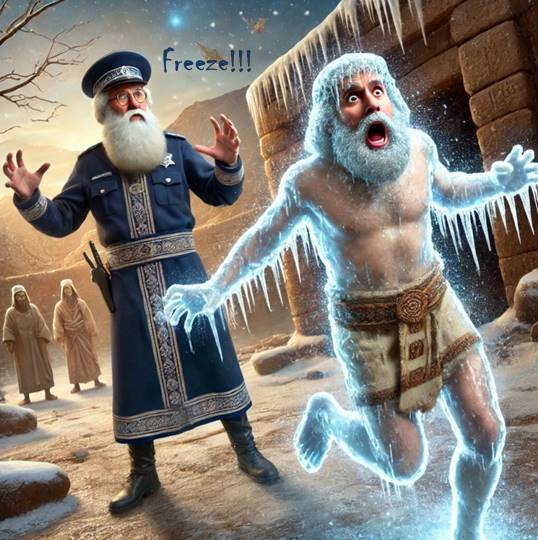We’ve been discussing some important points about Covenant both in Scripture and in the ancient world. So, if you’ve been following my string of posts on Covenant, here are our facts so far:
- God didn’t invent covenant, he used it because it was a valuable tool for communicating his plan, embodying the hope of faithfulness, trust, obedience, and danger innate to it.
- Covenant was a “contract-like” social genre where people took oaths to do or not do certain things, in which their honesty was secured by the fear they have of the gods whom they themselves have called upon to destroy them if they prove dishonest and unfaithful.
- As a genre, covenants had specific common forms which diversified and changed through time. Knowing the form and time is important for understanding the often unstated rules of covenant.
- The central form was known as suzerain-vassal treaty, which had up to 7 parts: Preamble (the who); historical prologue (the “you owe me loyalty”); stipulations (what one must do to keep the covenant); text and renewal (practical aspects of keeping records & remembering the details); Divine Witnesses (the gods that will get you if you violate the stipulations); blessings and curses (what the gods will do if you prove faithful or unfaithful to the stipulations); ratification (ritual “signing” of the contract that usually represented death imagery)
- In the suzerain-vassal treaty, the vassal takes all the oaths, the suzerain promises nothing… but there were unstated loyalties and protections that a suzerain was expected to keep toward a faithful vassal. (One can imagine that understanding these can prove important… as can recognizing the special words that their societies used to express these expected loyalties. More on this in a future post.)
Today, I’d like to add a 6th element to this list. So here goes:
6. Covenants came in what Paul Kalluveettil[1] has called frozen formulas.
There it is. That is all I wanted to say. Understanding this point will transform your perception of Scripture… radically. So let’s explain it quickly.
Anything that is common to a culture will eventual develop ways of being referenced by the members of that society that involve instant recognition. Sometimes these are phrases, or pictures, or actions that immediately call a thing to mind in all its 3 dimensional splendor.
Think of a wedding. A white veil or dress; the use of terms like bride, bridesmaid, groom or groomsman, best man, maid of honor, bachelor party, rehearsal dinner, etc; the music we call the wedding march can be named in two or three notes; two little well dressed statues atop a cake; Even the statements, “…let him speak now or forever hold his peace,” or “Dearly beloved we are gathered here today…” Any one of a hundred different references can invoke WEDDING and bring to mind the whole program of events and associations and the feelings that WEDDING entails.
There are also common legal contracts, standard contracts that come with fill in the blank sections or sometimes nothing more than a sign at the bottom and date. There are expected rules, payouts, defaults, etc. In fact, in our society, where prenuptial agreements are often viewed with suspicion, few realize that no prenup is a prenup… it means that the standard rules for wealth distribution established by our society for divorces is in force… a standard, unsigned prenup established by the common rules of our society.
Combine all these notions and you will begin to get the idea of frozen formula covenant making. In the biblical era, one did not have to go through a lot of ritual hoopla to make a covenant, though the ceremony was important in some cases… perhaps non-standard cases where stipulations needed to be specified for one reason or another. To make a common covenant, a common bonded agreement, one needed to do little beyond offering up a ritual phrase or action.
To recognize these ritual phrases and actions is important for understanding the way in which different authors are engaging covenant issues and the different places that different sorts of covenants are being established.
So, while we will discuss different sorts of covenants in another post, let’s list some of the ritual acts that represent the establishment or ritual maintenance of covenant relationships… sometimes different kinds of covenant relationships.
- Baptism & Communion are both covenant making rituals.
- Sabbath keeping, Tassel wearing, circumcision
- The Rainbow
- Exchanging clothes/giving clothes (varies kinds of clothing symbolism are extensive in the ancient near east)
- Grasping a garment hem
- Shaking hands
- Decreeing familial relationship
- Eating together
- Cutting animals in half
Beyond these, there are important terms that have powerful covenant associations that a biblical reader needs to recognize. I will write posts on these later.
- Any family terms like “Brother, Father, Son, etc…”
- To Know
- Loving-kindness… the Hebrew term hesed
- oath, covenant, swear, cut,
- Keep
- Remember
- Righteous; faith; loyalty; trust
- Mercy; favor; grace
If you want to discover all the places in scripture where covenants and covenant rules are in play, you should also look for pieces and parts of known covenants or covenant acts. “I am YHWH your God,” or “God of Abraham, Isaac, and Jacob,” are pieces of long established covenants. Any appeal to them in any part is an appeal to the whole.
So, now, you might be getting the importance of #6. Covenant is on almost every page of the Bible.
Discover more from Biblical Literacy with Dr. Andrew D. Sargent
Subscribe to get the latest posts sent to your email.


